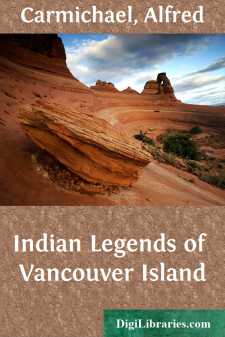Categories
- Antiques & Collectibles 13
- Architecture 36
- Art 48
- Bibles 22
- Biography & Autobiography 813
- Body, Mind & Spirit 142
- Business & Economics 28
- Children's Books 17
- Children's Fiction 14
- Computers 4
- Cooking 94
- Crafts & Hobbies 4
- Drama 346
- Education 46
- Family & Relationships 57
- Fiction 11829
- Games 19
- Gardening 17
- Health & Fitness 34
- History 1377
- House & Home 1
- Humor 147
- Juvenile Fiction 1873
- Juvenile Nonfiction 202
- Language Arts & Disciplines 88
- Law 16
- Literary Collections 686
- Literary Criticism 179
- Mathematics 13
- Medical 41
- Music 40
- Nature 179
- Non-Classifiable 1768
- Performing Arts 7
- Periodicals 1453
- Philosophy 64
- Photography 2
- Poetry 896
- Political Science 203
- Psychology 42
- Reference 154
- Religion 513
- Science 126
- Self-Help 84
- Social Science 81
- Sports & Recreation 34
- Study Aids 3
- Technology & Engineering 59
- Transportation 23
- Travel 463
- True Crime 29
Indian Legends of Vancouver Island
Categories:
Description:
Excerpt
THE ANCIENT HOME OF THE SESHAHTS
To the lone Indian, who slowly paddles his canoe upon the waters of this western sound, each tree of different kind by shade of green and shape of crown is known; the Toh-a-mupt or Sitca spruce with scaley bark and prickly spine; the feathery foliage of the Quilth-kla-mupt, the western hemlock, relieved in spring by the light green of tender shoots. The frond-like branches and aromatic scent betray to him the much-prized Hohm-ess, the giant cedar tree, from which he carves his staunch canoe. These form the woods which sweep from rocky shore to topmost hill.
Small bays with sandy beaches white with broken clam shells mark the shore, and if across the beach a stream of crystal water rippled to the sea, one Indian lodge or more was sure to be erected on the rising land behind; for Indians always choose to build their homes on sheltered sandy bays where pure fresh water runs, and so in years which are among those past and gone one could not fail to see the blue wood smoke of Indian fires hanging like gauze above the little bays; but most are now deserted and corner posts of old time houses alone are seen, and beds of stinging nettle cover ancient kitchen middens, and spirea and elderberry strive for space where once red strips of salmon hung in the smoke of punk-wood fires, and stillness reigns where once the Indians' mournful song was heard.
Between the bays are rugged rocky points, where, by the constant wash of winter waves the rocks are carved in shapes uncouth and weird--giants in stone, whose heads are crowned with scrubby conifers, upon whose feet the wild seas break, or in the summer time the gentle wavelets lap. On jutting rocks the black Klap-poose, the shag, in silence sits, while circling overhead the keen eyed gulls watch for the shoals of fry on which they feed.
Come now with me and I will guide you to some beauty spots, unknown, unguessed except to those who have explored the sea creeks and sheltered passage ways abounding on that western coast. Perhaps between two rugged rocks we may find an opening where it cuts its way deep into the land. In many parts, the lichen-covered canyon walls approach so close together that our canoe can scarcely pass, and more than likely we shall find the passage bridged by some old fallen tree, its ancient trunk enveloped in soft moss and seedling forest trees. Reflected in the water's surface are flowering berry shrubs, which adorn the banks on either side. We see the glossy-leaved shalal, the fruit of which the Indians gather to dry for winter use, and clumps of maiden hair and other ferns rooted in old tree trunks and rocky crevices. Such is the picture of many a salt sea creek found in the regions round fair Barkley Sound.
Perhaps our fancy leads among the islands of the sound. It may be that a storm has lately spent itself, and long deep swells are rolling in from the wide ocean lying to the west. Our staunch canoe is lost in the deep green waters of the heaving main. It climbs only to descend and climb once more, and thus we slowly cross the Middle Channel and reach calm water....


